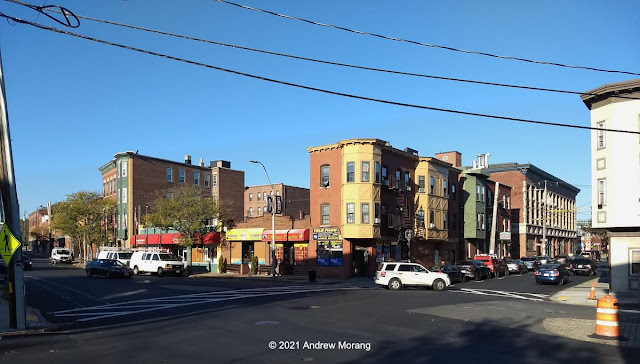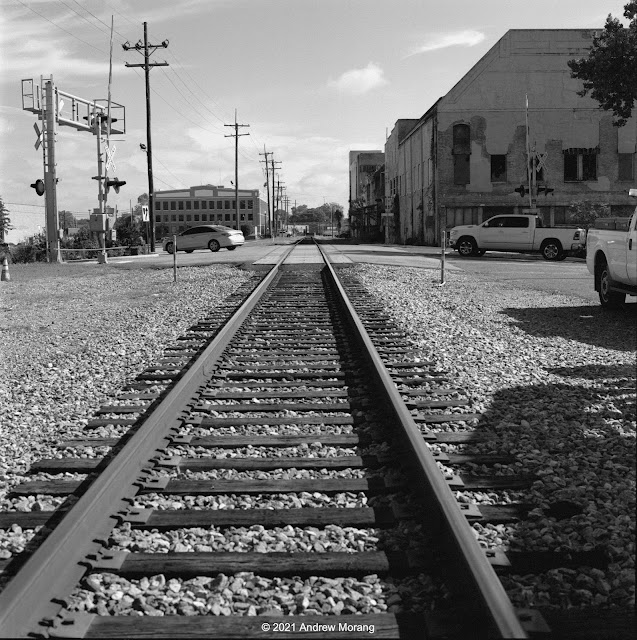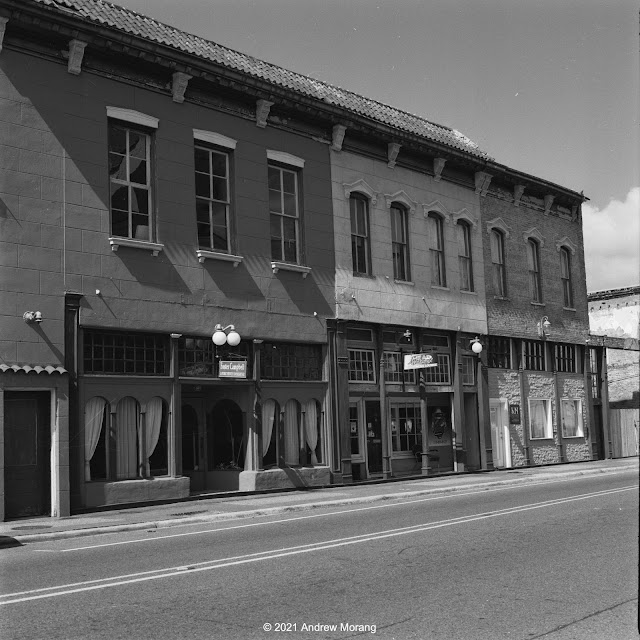Chelsea is a historic city across the Mystic River from Boston, Massachusetts. The Naumkeag Tribe lived in that area for thousands of years before the first European settler built a trading post in 1624. Several battles during the revolutionary war were fought in Chelsea.
When I was young, Chelsea was a rough and tumble working-class community with factories and dense housing. This usually consisted of wood triple-deckers, often in poor condition. Many were erected after 1908, when an immense fire destroyed large portions of the older neighborhoods.
In 1973, a second great fire left about 20 percent of the city in ashes. Residents left, the tax base collapsed, and the city sank into crime, corruption, and gross mismanagement. The State of Massachusetts imposed a state-approved receiver to control the city, improve schools, overhaul the police, and dismantle the corrupt city government. By 1995, the city was on the mend.
 |
| Morning at the junction of Pearl Street and Congress Avenue, Chelsea |
 |
| Park Street |
 |
| Congress Avenue |
Since my last visits in who knows how many years, the city has been revived and semi-gentrified. Today, it looks pretty good. My childhood memories are totally out of date. The houses are mostly vinyl-clad, the streets clean, and the nearby school bustling with children and parents walking their kids to school (walking?). The area in the photographs above has become largely Hispanic, and I heard Spanish being spoken regularly. There were no spooky vibes as I feel in many other American cities. I could live here with no major issues except for the congestion and lack of parking.
Heading north, Route 1 is still pretty crummy, but it is strip America of gaudy architecture as opposed to burned out and abandoned malls and strip shopping centers.
 |
| Katz Bagel Bakery, 139 Park street, Chelsea |
 |
| Katz Bagel Bakery interior - fresh and authentic |
My wife and I recently stayed in a Logan Airport hotel on the Chelsea side of Chelsea Creek (a waterway that flows into the Mystic River near where it debouches into Boston Harbor). The breakfast was offal. What is wrong with American hotels? I walked west into town to see where I could get a decent coffee. I found myself at Katz Bagel Bakery. This is the real thing! This family-owned company has been making bagels here since 1938. I bought three and asked about a package of cookies on the counter. The baker said free, take them. As for coffee, he directed me to a Hispanic convenience store. A Hispanic lady was mixing coffee con leche with vast amounts of sugar, but I poured my own for only $1.
The Jewish tradition dates back to the early 20th century, when Chelsea was a major destination for Russian and Eastern European immigrants. Russian Jews came in large numbers after the 1890s, in response to pogroms in their home country and, after the 1917 revolution, to Communist persecution.
 |
| Charlestown street leading downhill from the Bunker Hill Monument |
 |
| USS Constitution ("Old Ironsides"), Boston National Historical Park. |
Cross the Mystic River to Charlestown, another a historic city within sight of Boston. Charlestown was the site of the Battle of Bunker (Bunkah) Hill, one of the early battles of the Revolutionary War. On a 2006 visit, I was surprised to see that Charlestown has also been gentrified and looks very nice.
I have written about Boston before:
Standby for more photographs of Boston and vicinity. If you have a chance, definitely visit Boston, savor the history, explore the cultural and historical offerings, and eat good food. (But don't try to drive in the city unless you are really brave.)
Happy and prosperous New Year to you all. I hope 2022 it is better and healthier than the ghastly 2021 that is about to end.
UPDATE
After a comment from a reader about the offal at American hotels, I thought I would include a photograph of the breakfast buffet at a hotel in the Passo di San Pellegrino in the Italian Dolomites. Many Italian hotels offer breakfasts like this. And the pastries are made by the chef on the premises. As I wrote before, what is wrong with American Hotels and their vile food offerings? Who eats at a captive restaurant in an American hotel?
 |
| Typical breakfast, Hotel Arnica, Passo di San Pellegrino, Italian Dolomites |






















































